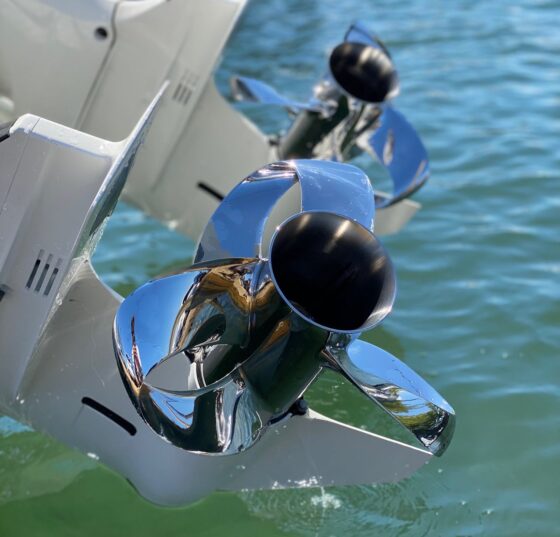
Transformative ‘silent blade’ propellor tech firm partners with Dolby

Propeller technology company, Sharrow Marine, has partnered with Dolby Family Ventures, a technology venture firm dedicated to funding innovation.
Dolby Family Ventures believes the Sharrow technology could ‘transform an industry’. Sharrow Marine is a subsidiary company of Sharrow Engineering, which launched in 2020 and won the 2020 Miami International Boat Show Innovation Award. Since then, Sharrow Engineering has made investments in manufacturing facilities just outside Detroit, USA, to meet demand for the Sharrow Propeller. The company says it plans to more than triple manufacturing output by early 2023.

“We couldn’t ask for a more ideal partner than Dolby Family Ventures,” says Greg Sharrow, president, and CEO of Sharrow Engineering and Sharrow Marine. “The Dolby name is recognised worldwide as the visionary leader in sound enhancement and noise reduction for audio recordings, starting with music.
“And our propeller technology is based on a silent drone blade that I developed while working as an executive producer and director in the video and music industry to capture enhanced drone shots where noise is a critical factor. Together, we will accelerate bringing the Sharrow Propeller technology to a much larger customer base through the marine industry and other propeller-driven market segments.”
“Sharrow Marine ushers in a new era of environmentally conscious boating with a design platform that results in higher performance and efficiency with lower fuel consumption. The Sharrow propeller offers safety, stability, improved planing, and displacement performance while reducing vibration, cavitation, and noise. The entire marine industry will benefit from these developments,” says David Dolby, CEO of Dolby Family Ventures.
The Sharrow Propeller has undergone extensive third-party testing, says the company, including independent testing by BoatTEST. Advantages cited by BoatTEST and others of the new Sharrow Propeller include:
- More command of the vessel when docking
- Planes at 500-1000 lower RPM
- Significant speed increase at mid-range RPMs
- As much as 30 per cent more efficient between 2500-4000rpm
- Provides up to 30 per cent greater range
- Noticeably less vibration
- Up to 50 per cent more reverse thrust
- Quieter at planing speeds
- Superior handling in tight turns at high speeds
